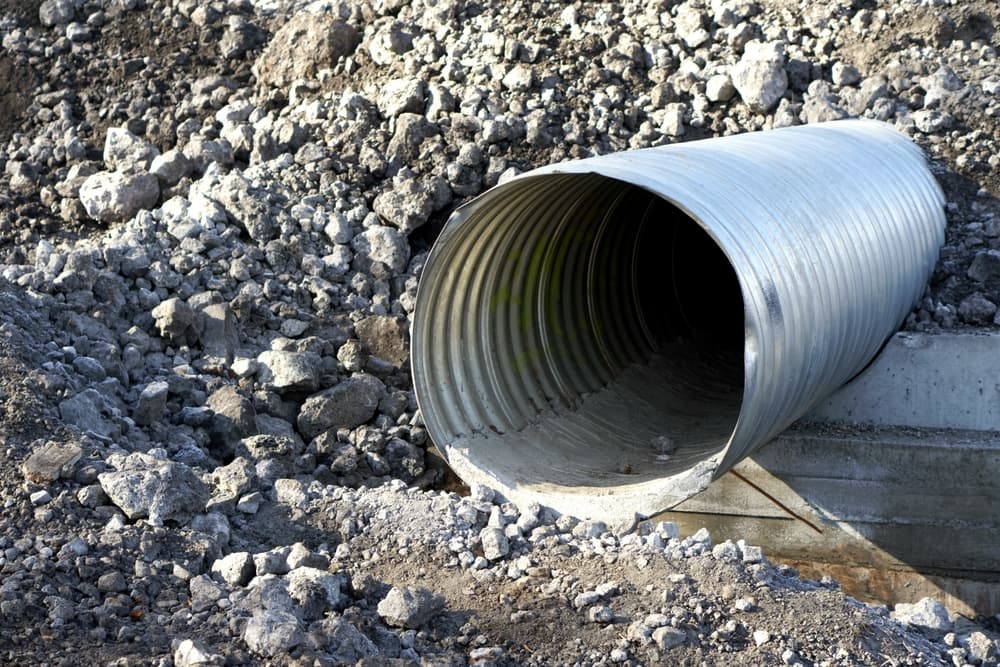Seasoned Tree Removal for Building Security
Seasoned Tree Removal for Building Security
Blog Article
Culvert Installation Facilitated: Step-by-Step Guide for Success
Mounting culverts may feel like an uncomplicated task, however ensuring a successful outcome needs mindful preparation and execution. From choosing the ideal culvert size to incorporating proper drainage measures, each step in the installment process plays an important role in the performance and durability of the culvert system. By following a systematic approach and taking note of key details, the installation can proceed efficiently, decreasing potential concerns down the line. Remain tuned to reveal the necessary actions and factors to consider that can make culvert setup a seamless and successful endeavor.
Selecting the Right Culvert Dimension
Choosing the ideal culvert size is essential for making certain efficient water circulation and architectural honesty in culvert installment tasks - Pad Construction. The dimension of the culvert directly affects the flow ability of water with the structure. A culvert that is as well little can result in flooding and overflow, while one that is too big may result in lowered water rate, potentially triggering debris buildup and blockages
To figure out the ideal culvert dimension, elements such as the watershed location, height flow prices, and hydraulic effectiveness demand to be meticulously considered. Calculations based upon these criteria assist in picking a size that can sufficiently take care of the predicted water quantity while lessening the risk of blockages and structural failure.
It is vital to speak with engineering standards and standards to make sure that the picked culvert size satisfies the project needs and regional laws (Pad Construction). By choosing the ideal culvert dimension, job managers can enhance water circulation, stop prospective issues, and boost the overall performance and durability of the culvert setup
Preparing the Setup Website
Effective culvert installation necessitates precise prep work of the installation site to guarantee optimum structural assistance and functionality. Before starting the installment process, it is vital to clear the website of any kind of particles, vegetation, or blockages that can hamper the culvert's placement. Making certain a level foundation is crucial for the appropriate placement and stability of the culvert. This might entail grading the site to produce a smooth, also surface area that can properly sustain the weight of the culvert and any kind of anticipated tons. In addition, proper compaction of the dirt underneath the culvert is essential to stop resolving or changing with time.
Moreover, it is very important to take into consideration factors such as dirt structure, groundwater degrees, and environmental influences when preparing the installment site. Conducting an read review extensive site analysis can assist recognize any potential obstacles or threats that may impact the culvert's efficiency. By putting in the time to prepare the installation website properly, you can aid guarantee a successful culvert installment that meets architectural needs and guarantees long-term performance.
Putting the Culvert Properly

The quality at which the culvert is positioned is critical for maintaining a correct slope for water flow. In addition, the culvert should be oriented properly to ensure that the inlet and electrical outlet are in the correct locations. Pad Construction.
Backfilling and Condensing the Soil
Proper backfilling and compaction of the soil around the culvert is vital to make certain stability and prevent possible concerns in the future. When the culvert is properly placed, the following vital step is to backfill the location around it with appropriate material. The backfill material must be without rocks, particles, and raw material to prevent damages to the culvert. It is advised to make use of granular material such as sand or crushed rock for backfilling, as it supplies good drainage and compaction homes.
Compaction assists in reducing the chances of settlement and makes sure consistent support around the culvert. It is vital to compact the soil equally on all sides of the culvert to keep its architectural stability.
Correct backfilling and compaction not only supply security to the culvert however additionally assist in protecting against dirt disintegration and preserving the durability of the culvert system.
Guaranteeing Proper Water Drainage Combination
Incorporating reliable drainage remedies plays a critical function in the overall performance and long life of culvert installations. Correct drain assimilation is essential for managing water flow, stopping disintegration, and making certain the architectural integrity of the culvert system. To achieve this, it is important to develop a comprehensive water drainage plan that considers variables such as the quantity of water expected, the topography of the area, and the kind of dirt present.

In addition, incorporating functions like disintegration control measures, look at here such as riprap or greenery, can even more enhance the efficiency of the water drainage system. By thoroughly intending and executing these drain options, culvert setups can function efficiently and withstand the examination of time.
Conclusion
Finally, proper culvert setup is important for preserving effective water drainage systems. By choosing the best culvert dimension, preparing the setup site, placing the culvert correctly, backfilling and condensing the dirt, and making certain appropriate water drainage assimilation, success can be achieved. Adhering to these steps will assist guarantee the longevity and efficiency of the culvert, inevitably adding to the overall success of the drain system.
Report this page